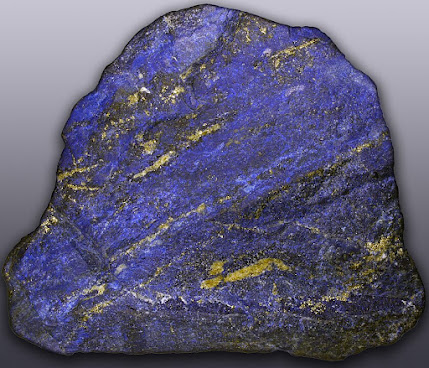The Weird History and Chemistry of Pigment: Tyrian Purple
Introduction:
Imagine a color so prized, it was reserved for royalty and draped emperors in cloaks of unimaginable value. This wasn't just any purple; this was Tyrian purple, a color steeped in mystery and a history as rich as its hue.
In this short post we will be unveiling the fascinating story of Tyrian purple, exploring its laborious production, cultural significance, and the science behind its elusive color.
A Shellfish Secret: Unveiling the Source:
The surprising source of Tyrian purple: the murex snail. Formally, it comes from the Muricidae family of sea snails. What would become dye and/or pigment was extracted from a gland. The hypobranchial gland and chemical it stores is used to protect the masses of snail eggs from bacteria.
Extracting the dye was a gruesome affair. Thousands of these unsuspecting mollusks were crushed to get at the gland, releasing a viscous, purple fluid that had to be painstakingly processed to yield a mere drop of usable dye. The smell was reported to be absolutely horrendous as they would leave the snails to decompose in large vats. The worst part, it took roughly 10,000 snails for about 1 gram of dye.
Not all murex snails were created equal. The prized variety dwelled along the Phoenician coast, making Tyrian purple a geographically exclusive commodity, further fueling its exorbitant price. The name Tyrian purple derives from Tyre, (in modern day Lebanon) where the Phoenicians thrived and dived for snails.
A Color Fit for Royalty: Cultural Significance:
Due to the very difficult, tedious, and involved process of extraction and production Tyrian purple was very expensive. Eventually, it became exclusive to emperors and royalty, as only they could afford it.
While reserved for royalty at its peak, Tyrian purple eventually graced the attire of priests, magistrates, and even the very wealthy. It adorned religious tapestries and became a mark of distinction in art and literature.
Compared to other purple dyes, Tyrian purple boasted a depth and vibrancy unmatched. Its resistance to fading further solidified its status as the ultimate symbol of luxury and prestige.
The Science of the Sea: Unraveling the Chemistry:
Modern science has finally cracked the code of Tyrian purple. The culprit? A pigment molecule called "6,6'-dibromoindigo," a complex structure nestled within the murex's hypobranchial gland.
Tyrian purple is surprisingly lightfast and stable, so it is a good pigment. However, the near extinction of the snails meant that its use was almost nonexistent for centuries.
To briefly state efforts to synthetically recreate the pigment, it is possible. You can purchase it here. BUT it is not easy or possible to do at scale as it requires dangerous chemicals like hydrobromic acid (HBr(aq)). The 'aq' subscript means that the solution is "aqueous" or in water as a solution. Also, it costs roughly $4,000 for a single gram.
A Legacy in Art and Literature:
Showcase the enduring presence of Tyrian purple in historical artwork and tapestries, highlighting the challenges of interpreting its color over time.
Explore references to Tyrian purple in literature, emphasizing its association with luxury and extravagance.
Discuss the ongoing fascination with Tyrian purple in modern times, its allure persisting despite its near-impossibility to replicate accurately.
Conclusion:
Tyrian purple's story is one of discovery, greed, extravagance, and the relentless human pursuit of beauty. It's a reminder that color, beyond aesthetics, can hold immense cultural and historical significance. As we delve deeper into this "royal hue," we not only explore an artistic process but also a window into a world where the line between power and luxury blurred as vividly as the color itself.



.jpg)


Comments
Post a Comment